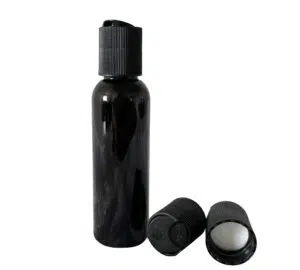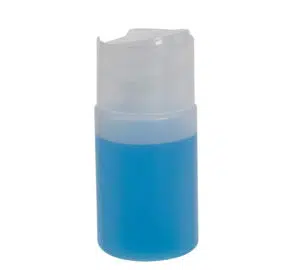High-density polyethylene (HDPE) bottles are ubiquitous in our daily lives, from the shampoo in your shower to the milk in your fridge. But have you ever wondered about the intricate journey these humble bottles undergo before they end up in your hands? Behind each HDPE bottle lies a fascinating tale of chemistry, engineering, and meticulous craftsmanship—a process shrouded in industrial secrecy and innovation. In this blog post, we will pull back the curtain and take you inside the world of an HDPE bottle manufacturer, revealing the secrets and complexities of their production process.
Imagine a factory where raw polyethylene granules are transformed into sturdy, lightweight containers capable of safely holding anything from household cleaners to essential medications. The transformation begins with a seemingly simple material but relies on cutting-edge technology and precision at every step. From the precise blending of polymers to the high-pressure molding techniques, every phase demands exacting standards to ensure both quality and safety. As we delve deeper, you’ll gain a newfound appreciation for the engineering marvels and tireless efforts that go into every HDPE bottle, shedding light on an industry that often goes unnoticed but is vital to our modern lifestyle.

Understanding HDPE: The Building Block of the Bottles
High-density polyethylene (HDPE) is the building block of the bottles we encounter in our daily lives. Understanding the properties and characteristics of HDPE is crucial to comprehend the manufacturing process behind these versatile containers.HDPE is a thermoplastic polymer made from petroleum. It is known for its high strength-to-density ratio, making it an ideal material for bottle production. Its durability, resistance to chemicals, and ability to withstand extreme temperatures make it a popular choice in various industries.
Blending Polyethylene Polymers: The Art of Formulation
The formulation of HDPE involves blending different polyethylene polymers to achieve specific properties desired for bottle production. This process requires expertise and precision to create a blend that meets the requirements of strength, flexibility, and chemical resistance.The selection and proportioning of polymers are critical factors in determining the final characteristics of HDPE bottles. Manufacturers carefully consider factors such as melt flow rate, density, and molecular weight distribution to achieve optimal results.
Molding Magic: High-Pressure Techniques Unleashed
Once the polymer blend is formulated, it undergoes a molding process that transforms it into the desired shape. High-pressure molding techniques are employed to ensure uniformity and precision in creating HDPE bottles. One commonly used method is blow molding, where molten HDPE is extruded into a hollow tube called a parison. The parison is then placed inside a mold cavity where compressed air inflates it to take on the shape of the mold. This technique allows for complex designs and consistent wall thickness throughout the bottle.
From Liquid to Solid: The Cooling and Solidification Process
After molding, the newly formed HDPE bottles go through a cooling and solidification process. This step ensures that they retain their shape and structural integrity once removed from the mold. Cooling can be achieved through various methods such as air cooling or water cooling. The choice of cooling method depends on factors like production volume, bottle size, and desired cycle time. Once the bottles have cooled and solidified, they are ready for further processing and quality control checks.
Quality Control: Ensuring Durability and Safety Standards
Ensuring the durability and safety of HDPE bottles is of utmost importance to manufacturers. Stringent quality control measures are implemented throughout the production process to meet industry standards and regulations. Quality control checks include dimensional inspections to verify bottle dimensions, leak tests to ensure proper sealing, and material testing to assess strength and chemical resistance. These measures guarantee that every HDPE bottle that leaves the manufacturing facility meets the highest quality standards.
Innovations in Bottle Design: Beyond Functionality
While functionality is a primary consideration in HDPE bottle design, manufacturers also strive for innovation in aesthetics and user experience. The design of HDPE bottles has evolved over time to cater to changing consumer preferences and market trends. Manufacturers experiment with various shapes, sizes, colors, and labeling techniques to create visually appealing bottles that stand out on store shelves. Additionally, advancements in technology have allowed for features like easy-to-use caps, ergonomic grips, and specialized dispensing mechanisms.
Environmental Considerations: Sustainability Practices in Manufacturing
As environmental consciousness grows worldwide, HDPE bottle manufacturers are increasingly adopting sustainable practices in their manufacturing processes. They aim to minimize waste generation, reduce energy consumption, and promote recycling initiatives. Many manufacturers now use recycled HDPE as a raw material for new bottle production. This not only reduces the demand for virgin materials but also helps divert plastic waste from landfills or oceans, Betterchois is one of the HDPE bottle suppliers who offer PCR HDPE plastic bottles and containers. Additionally, eco-friendly packaging solutions such as biodegradable additives or lightweight designs contribute to reducing the overall environmental impact of HDPE bottle manufacturing.
Industry Insights: Navigating the Competitive Market
The HDPE bottle manufacturing industry is highly competitive due to its widespread applications across various sectors. Manufacturers must stay updated with market trends, consumer demands, and technological advancements to remain competitive. Factors such as cost-efficiency, production capacity, and product quality play a crucial role in determining a manufacturer’s success. Continuous research and development efforts are undertaken to improve manufacturing processes, enhance bottle performance, and explore new applications for HDPE bottles.
Future Trends: The Evolution of HDPE Bottle Manufacturing
The future of HDPE bottle manufacturing holds exciting possibilities. Advancements in materials science and technology are expected to drive innovation in the industry.Manufacturers are exploring the use of bio-based polymers derived from renewable sources as an alternative to traditional petroleum-based HDPE. Additionally, advancements in 3D printing technology may revolutionize the production process by enabling customized bottle designs with reduced material waste.

Conclusion: Unveiling the Intricate World of HDPE Bottle Production
The manufacturing process behind HDPE bottles is a complex blend of science, engineering, and creativity. From understanding the properties of HDPE to formulating polymer blends, employing high-pressure molding techniques, ensuring quality control measures, and embracing sustainability practices – every step contributes to the creation of these versatile containers.As consumers, we often take for granted the effort that goes into producing everyday items like HDPE bottles. By gaining insight into the intricate world of HDPE bottle production, we can appreciate the craftsmanship and innovation that make these bottles an essential part of our modern lifestyle.